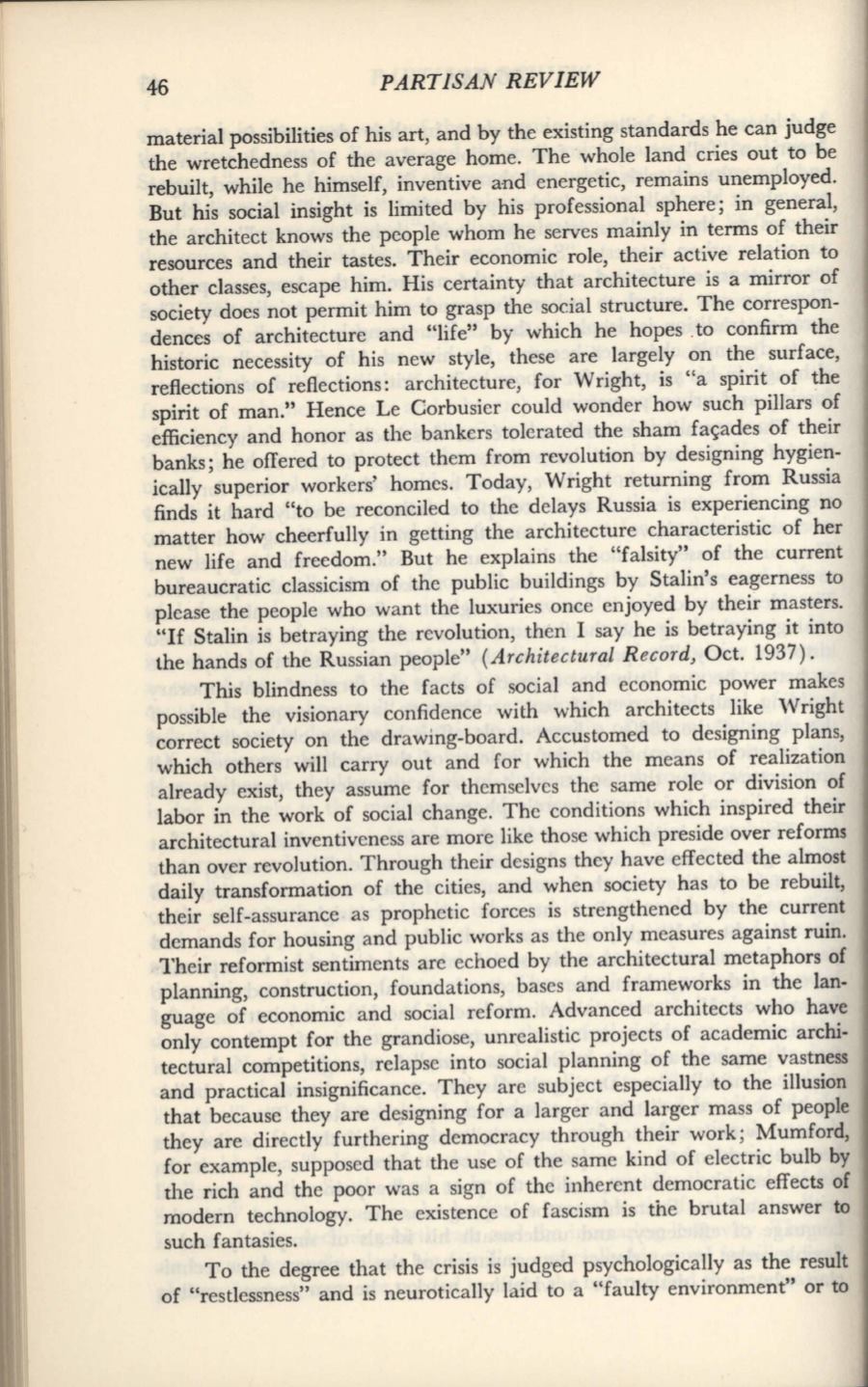
46
PARTISAN REVIEW
material possibilities of his art, and by the existing standards he can judge
the wretchedness of the average home. The whole land cries out to be
rebuilt, while he himself, inventive and energetic, remains unemployed.
But his social insight is limited by his professional sphere; in general,
the architect knows the people whom he serves mainly in terms of their
resources and their tastes. Their economic role, their active relation to
other classes, escape him. His certainty that architecture is a mirror of
society does not permit him to grasp the social structure. The correspon-
dences of architecture and "life" by which he hopes. to confirm the
historic necessity of his new style, these are largely on the surface,
reflections of reflections: architecture, for Wright, is "a spirit of the
spirit of man." Hence Le Corbusier could wonder how such pillars of
efficiency and honor as the bankers tolerated the sham fa«ades of their
banks; he offered to protect them from revolution by designing hygien-
ically superior workers' homes. Today, Wright returning from Russia
finds it hard "to be reconciled to the delays Russia is experiencing no
matter how cheerfully in getting the architecture characteristic of her
new life and freedom." But he explains the "falsity" of the current
bureaucratic classicism of the public buildings by Stalin's eagerness to
please the people who want the luxuries once enjoyed by their masters.
"If Stalin is betraying the revolution, then I say he is betraying it into
the hands of the Russian people"
(Architectural Record,
Oct. 1937).
This blindness to the facts of social and economic power makes
possible the visionary confidence with which architects like Wright
correct society on the drawing-board. Accustomed to designing plans,
which others will carry out and for which the means of realization
already exist, they assume for themselves the same role or division of
labor in the work of social change. The conditions which inspired their
architectural inventiveness are more like those which preside over reforms
than over revolution. Through their designs they have effected the almost
daily transformation of the cities, and when society has to be rebuilt,
their self-assurance as prophetic forces is strengthened by the current
demands for housing and public works as the only measures against ruin.
Their reformist sentiments are echoed by the architectural metaphors of
planning, construction, foundations, bases and frameworks in the lan-
guage of economic and social reform. Advanced architects who have
only contempt for the grandiose, unrealistic projects of academic archi-
tectural competitions, relapse into social planning of the same vastness
and practical insignificance. They are subject especially to the illusion
that because they are designing for a larger and larger mass of people
they are directly furthering democracy through their work; Mumford,
for example, supposed that the use of the same kind of electric bulb by
the rich and the poor was a sign of the inherent democratic effects of
modern technology. The existence of fascism is the brutal answer to
5uch fantasies.
To the degree that the crisis is judged psychologically as the result
of "restlessness" and is neurotically laid to a "faulty environment" or to


